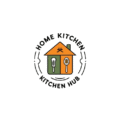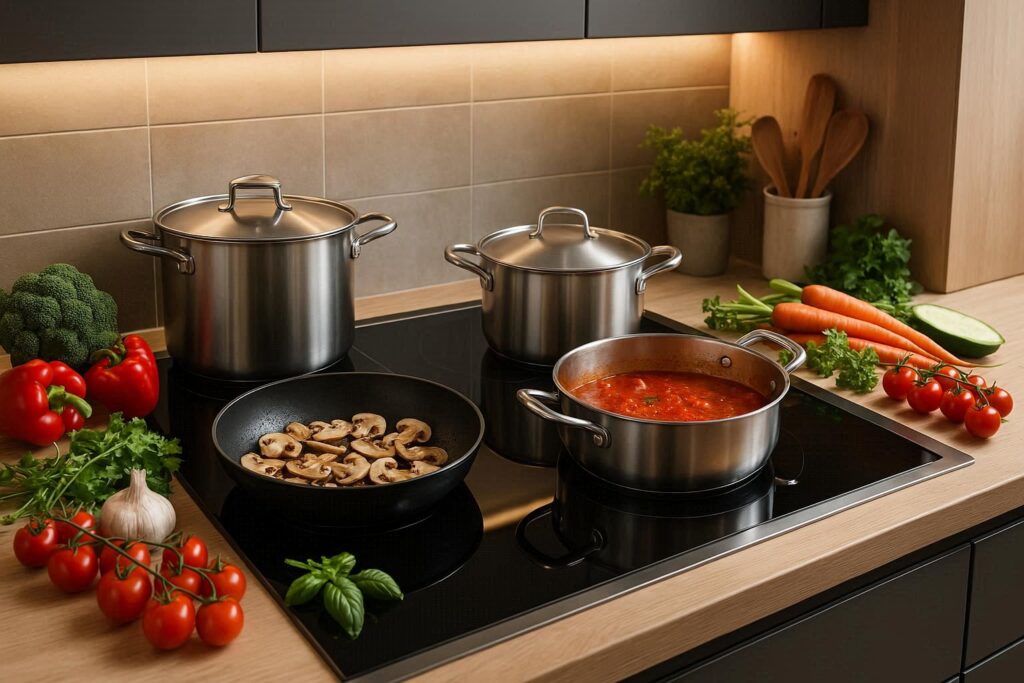When it comes to setting up a kitchen, one of the most important decisions you’ll make is selecting the right cooking surface. If you’re in the process of remodeling your kitchen or just curious about the equipment you use every day, you may have come across the term “hob.” Whether you’re a seasoned home cook or just starting to experiment in the kitchen, understanding what a hob is, how it works, and the different types available is crucial.
In this guide, we’ll break down everything you need to know about kitchen hobs, including their definition, uses, types, and more. By the end of this post, you’ll have a clear idea of which hob suits your kitchen needs. Let’s dive in!
What is a Hob in a Kitchen?
In the simplest terms, a hob refers to the cooking surface in a kitchen, typically featuring burners or heating elements. This is where you place your pots, pans, and skillets to cook meals. A kitchen hob is the primary space for cooking tasks such as boiling, frying, simmering, and sautéing.
Hobs come in various styles, from the traditional gas hob to modern induction hobs. No matter the type, their function is the same: they provide a Cleaning Guide for Home & Kitchen heat source for cooking. So, whether you’re boiling water for pasta or frying vegetables, the hob plays a crucial role in preparing your meals.
While many people may be familiar with the term “stove,” the word “hob ” is more commonly used in the UK and other parts of the world to refer to the cooktop, which is separate from the oven. In the United States, a stove typically refers to the entire unit, including both the cooktop and the oven, whereas in the UK, “hob” is used specifically for the top surface.
What is a Hob Used For?
The hob’s primary function in the kitchen is to provide a heat source for cooking. It is used to heat up pots and pans so you can cook a variety of foods. Let’s break down some of the most common cooking tasks you’ll use your hob for:
- Boiling: Whether it’s pasta, potatoes, or vegetables, the hob is perfect for boiling water or liquids.
- Frying: Frying requires a consistent, high heat, making the hob the ideal tool for cooking crispy dishes like fried chicken or sautéed vegetables.
- Simmering: When you need to gently cook sauces or soups, a hob allows you to adjust the heat for long, slow simmering.
- Searing: The intense heat of a hob is perfect for searing meats and vegetables, giving them that delicious, caramelized exterior.
The efficiency of cooking on a hob comes from its ability to distribute heat evenly. You can control the intensity of the heat with ease, allowing for more precise cooking. This is why a hob is often considered an essential tool for home cooking—it allows flexibility and accuracy in meal preparation.
Types of Hobs in the Kitchen
When it comes to kitchen hobs, there are a few different options to choose from, each with its advantages. Let’s break down the most common types:
Gas Hobs
Pros:
- Instant heat: Gas hobs provide an immediate flame that allows you to adjust the heat instantly.
- Temperature control: The visible flame gives you a visual cue for heat intensity, making it easier to control cooking temperature.
Cons:
- Cleaning: Gas hobs often require more maintenance and cleaning, as food can spill between the burners and the hob surface.
- Efficiency: While reliable, gas hobs are less energy-efficient than electric or induction hobs.
Gas hobs are great for those who prefer cooking with a flame and want precise control over the heat. They’re often favored by professional chefs for their fast, responsive cooking abilities.
Electric Hobs
Pros:
- Even heat distribution: Electric hobs provide consistent, even heat, which makes cooking reliable and predictable.
- Ease of cleaning: Unlike gas hobs, electric hobs typically have a flat surface that is easier to clean.
Cons:
- Slow heat-up time: Electric hobs tend to take longer to heat up compared to gas.
- Temperature adjustment delay: It can take some time for the heat to adjust when you turn the dial, unlike the instant response of gas.
Electric hobs are popular in many homes due to their ease of use and maintenance. They’re a great option if you value a clean, flat cooking surface.
Induction Hobs
Pros:
- Energy efficiency: Induction hobs heat up faster than electric or gas, as they use magnetic induction to directly heat pots and pans.
- Precision: They provide precise temperature control, offering excellent performance for delicate dishes.
Cons:
- Special cookware required: Induction hobs only work with ferrous (magnetic) cookware, so not all pots and pans will be compatible.
- Price: Induction hobs tend to be more expensive than gas or electric options.
Induction hobs are growing in popularity due to their energy efficiency and speed. They’re ideal for people who want modern, high-performance cooking in a sleek package.
Ceramic Hobs
Pros:
- Smooth, flat surface: Ceramic hobs are easy to clean because they have a flat, glass surface.
- Even heat: They provide steady and even heat across the cooking area.
Cons:
- Durability: The glass surface can be more prone to scratching or cracking, so extra care is needed.
- Slower response time: Similar to electric hobs, ceramic hobs don’t heat up as quickly as gas or induction hobs.
Ceramic hobs offer a nice balance between the sleekness of induction and the reliability of electric hobs. They are visually appealing and easy to maintain.
Comparison Table:
Type of HobProsCons
Gas Instant heat, precise control Requires cleaning, less efficient
Electric Even heat, easy to clean Slow heat-up, delayed temperature control
Induction Fast, energy-efficient, precise Requires compatible cookware, expensive
Ceramic Smooth, easy to clean, even heat Fragile surface, slower response time
What is a Hob in a Kitchen Cabinet?
In modern kitchens, many people opt for a clean and sleek look by integrating their hobs into kitchen cabinets. This creates a more organized cooking space while maximizing available counter space. When installing a hob in a cabinet, it’s essential to plan the space carefully to ensure proper ventilation and access.
Considerations for hob placement in kitchen cabinets:
- Size and compatibility: Make sure the hob fits well within the designated space in your kitchen cabinet. Measure carefully before making a purchase.
- Ventilation: Ensure that your cabinet design allows for adequate ventilation, especially for gas and induction hobs.
- Aesthetic integration: A hob that’s built into your kitchen cabinets can create a streamlined, modern look, blending seamlessly with your overall kitchen design.
What is the Full Form of Hob?
The word hob doesn’t actually have a “full form” in the context of kitchen appliances. Historically, it referred to a flat metal plate or stove used for heating. The term “hob” has roots in Old English, where it originally referred to a small stove or a cooking surface. Over time, the word evolved into the appliance we know today.
What is a Hob British?
In British English, the term hob refers to the cooktop or the burner area of the kitchen appliance, separate from the oven. It is widely used in the UK and other parts of the world like Australia.
In the United States, however, the term stove is often used to refer to the entire cooking unit, including both the oven and the burners. While the difference is largely regional, understanding the distinction between these terms can help when you’re discussing kitchen equipment across different cultures.
Hob Folklore – Any Myths or Stories?
You might be surprised to know that the term hob also has a place in folklore. In British mythology, hobgoblins are mischievous creatures, often thought to live in homes and help with household chores. Over time, the word “hob” has been associated with both these folklore creatures and the kitchen cooking tool, possibly due to the hob’s connection to traditional hearths where many chores were done.
What is a Hob Fireplace?
A hob fireplace is a traditional type of fireplace that was often used for cooking. In historic homes, these hobs were a part of the hearth and were used to prepare meals, especially in times before modern stoves and ovens. Unlike a modern kitchen hob, a hob fireplace was integrated directly into the fireplace structure and was heated by wood or coal.
What is a Hob Animal?
In the context of animals, the term hob refers to a male ferret. Historically, this term was used in animal husbandry to describe male ferrets used for hunting or farming. It’s important to differentiate this from the cooking appliance, as they are entirely unrelated, but confusion can arise due to the shared name.
Kitchen Hob and Chimney: How Do They Work Together?
If you have a gas or traditional stove, the kitchen hob is closely linked to your kitchen’s ventilation system, specifically the chimney or extractor hood. These hoods are designed to pull out smoke, steam, and cooking odors, ensuring your kitchen remains fresh and safe.
Choosing the right hood or chimney depends on the type of hob you have. Gas hobs, for instance, require more powerful extraction systems to eliminate smoke and fumes, while induction and electric hobs typically produce less heat and vapor.
What is a Hob in a Kitchen Called?
The term hob is widely used in the UK, but in other regions, people might refer to it as a cooktop or stove. Understanding the local terminology will help you navigate the kitchen appliance market more easily. When in doubt, hob is the safest term to use for the cooking surface, especially in a British or European context.
FAQ
What is the difference between a stove and a hob?
A stove typically refers to the entire cooking unit (including the oven), while a hob refers specifically to the cooking surface or burners.
Can I use any pot on an induction hob?
No, induction hobs only work with ferrous (magnetic) cookware. Make sure your pots and pans are induction-compatible.
Do all hobs require a chimney or hood?
Gas hobs generally require a chimney or hood for ventilation, while electric and induction hobs produce less smoke and steam, so a hood may not be necessary.
What is a hob used for in traditional cooking?
Hobs were traditionally used in hearths for cooking, before modern stoves and ovens were invented.
How do I clean my kitchen hob?
Cleaning methods depend on the type of hob, but most involve wiping down the surface with warm soapy water or using a special cleaner for ceramic or induction hobs.
Why is my induction hob not working?
Induction hobs require magnetic cookware. If your cookware isn’t compatible, the hob won’t work. Check for compatible pots or pans.
Conclusion
Now that you’ve learned what a hob is and how it functions in your kitchen, you’re ready to choose the perfect cooking surface for your needs. Whether you’re cooking with gas, electric, induction, or ceramic, each hob type has its benefits. When making your choice, consider the size, style, and efficiency of the hob, and also think about how it integrates into your kitchen design for optimal functionality.

